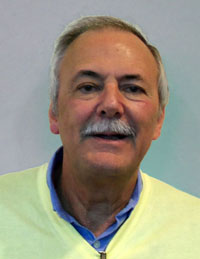
Bill Doub is Lead Chemist, R&D in the FDA’s Division of Pharmaceutical Analysis, which is part of the Office of Pharmaceutical Science in the Center for Drug Evaluation and Research (CDER)
Q. What does the Division of Pharmaceutical Analysis do?
A. Over 30 years or so that I have worked for the FDA, the role of the lab has changed. Historically, we did almost entirely method validation, and that was before generic drugs, so that was method validation for new drugs. Then in 1984 when the Generic Drug Act was passed, we began doing method validation for generic drugs also.
Along the way, though, we have trained the people in the regional laboratories to do most of the routine kind of things, so the method validation we do now at our laboratory is mostly for complex dosage forms, things like transdermals and inhalables. The Agency isn’t currently doing much with nanotechnology, but that will eventually come our way too, I suspect.
Right now, about a quarter of our chemists are going to be spending 75% of their time reviewing applications in our laboratory because the Office of Generic Drugs (OGD) can’t hire people fast enough.
We’ve done a lot of applied analytical development to either better understand potential problems with drugs or just better ways to analyze them. Mostly, we measure particle size, which means sometimes we get asked to measure particle size on other kinds of products because we’re the ones who know how to do that.
Q. What percentage of the drugs dealt with in the lab are OINDPs?
A. We have an Inhalation Team of 4-5 chemists who do the Division’s OINDP-related work. For that team, in terms of method validation, it’s probably at least 60% inhalables if not 70% inhalables.
Q. How big is the lab?
A. We have about 30-32 people total working in a facility that’s about 30-35,000 sq. ft. HPLC takes up a lot of room.
We recently moved into this facility; it’s about 4 miles from where we were. Before, we were in a building that was a federal courthouse; they laid the cornerstone in 1933, so it was built by the WPA. That building will be there when you and I are dust. But the infrastructure leaves a lot to be desired, so we moved into a building that Monsanto built in the 70s, most recently occupied by Pfizer.
It’s a unique building in that there are no internal supports the roof is held by the exterior walls, so the architects were just elated by that because they could take everything out wall to wall, and they could make the lab exactly like we wanted because we don’t have to worry about supporting the roof. It’s a wonderful facility though there are still a few bugs to be worked out.


